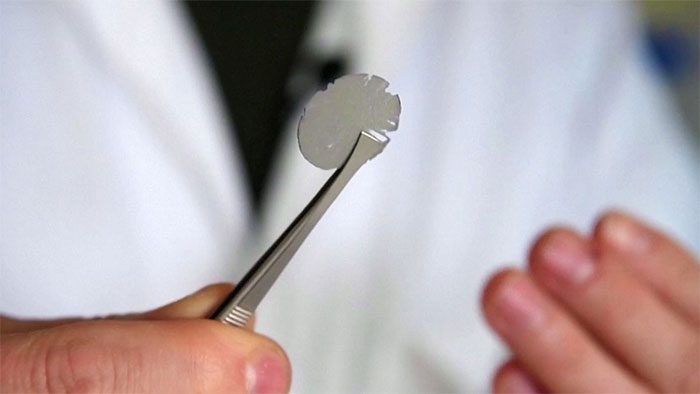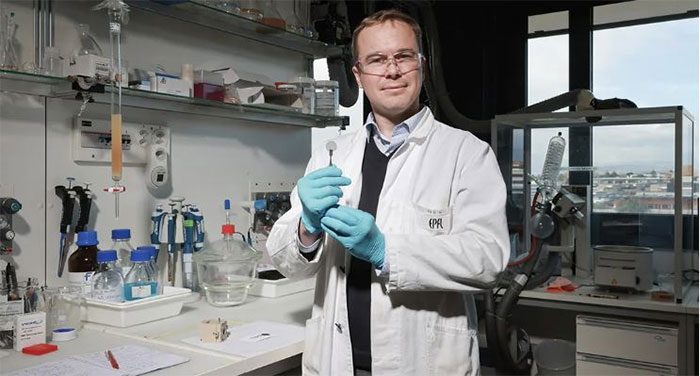Scientists in Switzerland have developed a leaf-like energy regeneration device aimed at seeking clean energy solutions to combat climate change.
Experts from the École Polytechnique Fédérale de Lausanne (EPFL) were inspired to create this energy conversion device based on the natural process of photosynthesis in plants.

“Artificial Leaf” Device. (Image: EPFL).
Professor Kevin Sivula at EPFL explains that natural photosynthesis occurs by taking carbon dioxide from the air and combining it with sunlight to produce hydrogen and oxygen. The result is sugar, which effectively stores sunlight in a chemical form. Therefore, he and his colleagues aimed to replicate this process: to capture sunlight and water vapor from the air and store that solar energy in the form of hydrogen.
Professor Sivula’s research and his team’s findings have been detailed in the journal Advanced Materials. They have developed a small, transparent microchip made of fiberglass coated with semiconductor material. This device uses sunlight to separate water into hydrogen and oxygen.
“We have a lot of sunlight, but the sun doesn’t always shine. Therefore, we need a way to store sunlight for future use. Storing sunlight in the form of hydrogen is the top choice to achieve this,” Professor Sivula elaborates.
The Swiss experts’ device combines semiconductor technology with a unique component: electrodes with three main characteristics. These electrodes are likened to artificial leaves, featuring a porous structure for maximum exposure to water in the air and possess electrical conductivity.
The most important feature of the electrodes is their structure: a 3D fiberglass network. This means the electrodes will be transparent, thereby maximizing the amount of sunlight that reaches the semiconductor coating.
The device consists of three main parts: a photoanode where oxygen is generated from the oxidation of water, a membrane to transport protons to a photocathode where the protons are reduced to hydrogen, and a semiconductor coating that allows the photoelectrochemical reaction to occur to produce hydrogen.

Professor Kevin Sivula. (Image: EPFL)
Although artificial photosynthesis has been implemented previously, EPFL’s new technology addresses two significant challenges: absorbing water from the air and providing energy for the chemical reaction using sunlight. The research team also discovered a more practical way to absorb water by utilizing humidity instead of liquid water. This allows the “artificial leaf” to avoid existing issues with current photoelectrochemical devices, which require light to stimulate photoactive materials or semiconductors submerged in liquid to create a chemical reaction.
In fact, photoelectrochemical devices that use liquids are difficult to scale up because they are challenging to manufacture and costly.
“We have attempted to use simple methods that can be easily scaled for application. However, we need to conduct further research to improve the efficiency of the device before moving on to the scaling phase,” Professor Sivula emphasized.
Currently, his team is focused on optimizing the mechanics, chemistry, and efficiency of the “artificial leaf” device. If they successfully enhance the conversion process from sunlight to hydrogen and its stability, artificial leaf systems could be installed everywhere, including in arid environments like deserts and areas with humid, low-light conditions.
According to Professor Sivula, converting solar energy into chemical bonds such as hydrogen is a practical approach that allows us to move towards a carbon-free economy and reduce environmental impact.


















































